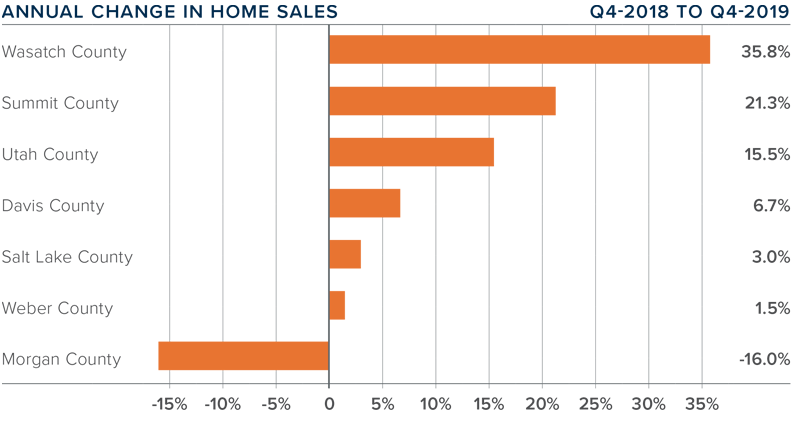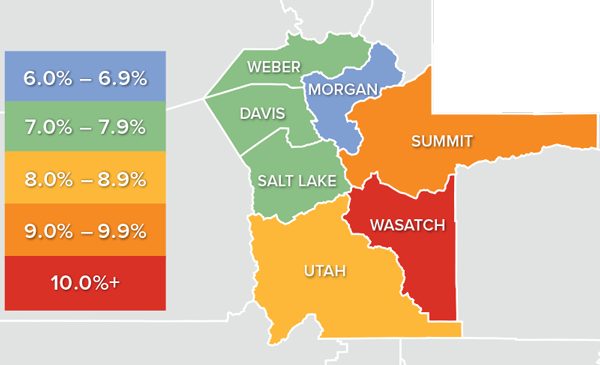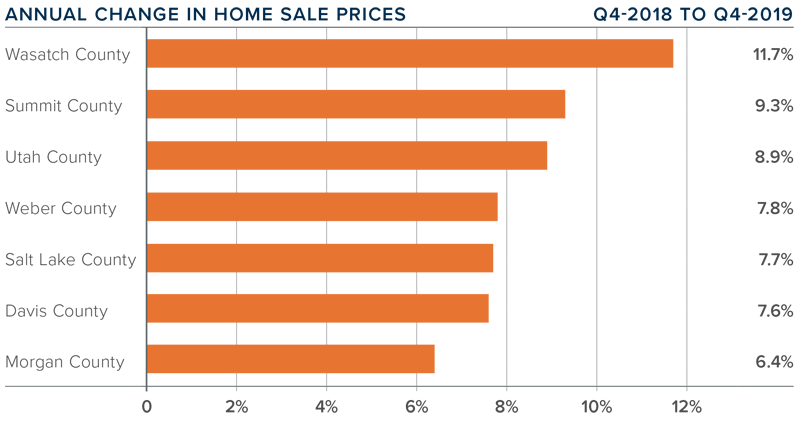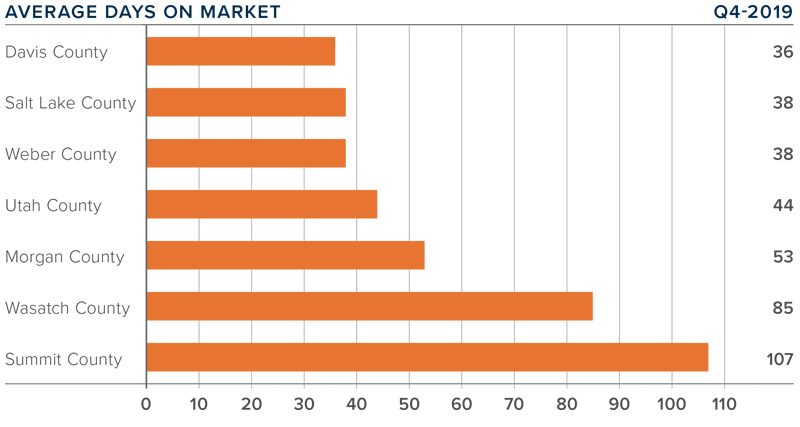The following analysis of select counties of the Utah real estate market is provided by Windermere Real Estate Chief Economist Matthew Gardner. We hope that this information may assist you with making better-informed real estate decisions. For further information about the housing market in your area, please don’t hesitate to contact me.
ECONOMIC OVERVIEW
Utah’s non-agricultural employment growth continues to impress. The addition of 49,500 jobs over the past 12 months represents a solid growth rate of 2.8%. We did see some fairly modest slowing in employment gains earlier in the year, but this appears to have been reversed. My current forecast is for the state to continue to grow its job base, though I anticipate modest slowing in the number of new jobs. With around 41,700 new positions added, we will see employment grow 2.6% in 2020. In November, the state unemployment rate was 2.4%, down from 3.2% a year ago.
HOME SALES
- 8,768 homes sold in the final quarter of 2019, representing a solid increase of 7% compared to the same period in 2018, but 17% fewer homes traded hands compared to the third quarter of 2019.
- Total sales activity rose in all but the very small Morgan County. Year-over-year, sales rose by double digits in three counties, with impressive increases in Wasatch, Summit, and Utah counties.
- The number of homes for sale in the final quarter of the year was 14.4% lower than in the same period a year ago and 21.3% lower than the third quarter of 2019. Regular readers may remember that listing activity had been rising, but I am afraid those days are behind us.
- Pending sales in the fourth quarter were up 10.7% compared to a year ago but were 24.3% lower than in the third quarter, suggesting that closings in the first quarter of 2020 may drop from current levels.

HOME PRICES
 The average home price in the region continued to rise in the fourth quarter, with a year-over-year increase of 9.5% to an average of $403,186. Home prices were 0.4% higher than in the third quarter of 2019.
The average home price in the region continued to rise in the fourth quarter, with a year-over-year increase of 9.5% to an average of $403,186. Home prices were 0.4% higher than in the third quarter of 2019.- All counties contained in this report saw price increases compared to the same period a year ago, with impressive gains across the board.
- Appreciation was strongest in Wasatch County, where prices were up 11.7% to $681,300.
- Home prices continue to appreciate at significant rates. I hope to see some slowing in price growth as we move through 2020, but this will only happen if the supply of homes for sale grows significantly.

DAYS ON MARKET
- The average number of days it took to sell a home in the counties covered by this report rose four days compared to a year ago.
- Matching the third quarter, homes sold fastest in Davis, Salt Lake, and Weber counties, and slowest in the expensive Summit County. All counties except Summit saw days-on-market rise compared to the fourth quarter of 2018.
- During the fourth quarter of the year, it took an average of 57 days to sell a home in the region, up from 45 days in third quarter.
- The modest increase in market time is not a concern as there still appears to be significant demand for housing.

CONCLUSIONS
 This speedometer reflects the state of the region’s real estate market using housing inventory, price gains, home sales, interest rates, and larger economic factors.
This speedometer reflects the state of the region’s real estate market using housing inventory, price gains, home sales, interest rates, and larger economic factors.
For the final quarter of 2019, I have moved the needle just a little more in favor of sellers. Inventory levels remain low, even in the face of modestly increasing market time. Prices and closed sales are higher, and these things certainly favor sellers.
ABOUT MATTHEW GARDNER
 As Chief Economist for Windermere Real Estate, Matthew Gardner is responsible for analyzing and interpreting economic data and its impact on the real estate market on both a local and national level. Matthew has over 30 years of professional experience both in the U.S. and U.K.
As Chief Economist for Windermere Real Estate, Matthew Gardner is responsible for analyzing and interpreting economic data and its impact on the real estate market on both a local and national level. Matthew has over 30 years of professional experience both in the U.S. and U.K.
In addition to his day-to-day responsibilities, Matthew sits on the Washington State Governors Council of Economic Advisors; chairs the Board of Trustees at the Washington Center for Real Estate Research at the University of Washington; and is an Advisory Board Member at the Runstad Center for Real Estate Studies at the University of Washington where he also lectures in real estate economics.
 Facebook
Facebook
 X
X
 Pinterest
Pinterest
 Copy Link
Copy Link



